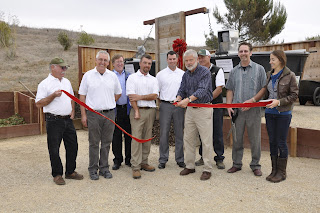U.S. Open Maintenance at Congressional Country Club
With the 2011 U.S. Open scheduled for Congressional Country Club June 16-19, the competitors are preparing themselves for a stiff competition to identify the best player at the championship.
While watching the U.S. Open on television may make many golfers envious of championship playing conditions, this work involves many extra volunteers who help the maintenance staff accomplish the countless tasks to put the course in shape. Thanks to the support from equipment companies and highly-qualified volunteer labor, maintenance tasks can be performed daily, and often many times per day. Every area of the golf course is maintained to provide the best possible playing quality, but these conditions are just temporary. This level of conditioning cannot be sustained week-in and week-out without such tremendous support.
Congressional Country Club
Course Fact Sheet
Fairways:
Width: Ranges from 18 to 35 yards, averaging 25 yards wide in the primary landing zones.
Grass Type: Predominantly Penncross creeping bentgrass along with other varieties interseeded over the years.
Mowing Height: 0.345 inch
Tees:
Grass Type: Penncross creeping bentgrass
Mowing Height: 0.345 inch
Greens:
Grass Type: Greens were rebuilt in 2009 to USGA Guidelines for Putting Green Construction and established with a blend of Penn A-1 and A-4 creeping bentgrass.
Mowing Height: 0.10 Mowing Height for collars and approaches: 0.310 inch
Target Stimpmeter Reading: 14-14.5 feet
Irrigation Practices: Only hand-watering on the greens. The goal is to achieve firmness without compromising the health of the grass. Soil moisture levels are constantly monitored with hand-held testers and in-ground sensors. Fairways and tees are irrigated on an as-needed basis. Wetting agents have been applied due to sand topdressing of both fairways and tees. The goal is to achieve even wetting when irrigation is applied.
Roughs:
Grass Type:
o intermediate rough – primarily perennial ryegrass
o primary rough – predominantly turf-type tall fescue.
On each side of the fairway, a 6-foot wide swath of intermediate rough running the length of each hole will be mowed at 0.875 inch. The same mowing height is used for the bunker tie-ins.
On greens with a primary rough, the mowing height is 3 inches.
For the sixth consecutive year, the USGA will use graduated primary rough. This setup creates a tougher and more challenging recovery shot for those who hit their drives farther off-line.
The first cut of primary rough is 6 yards wide and mowed between 2.75-3.25 inches, depending on the length of the hole.
The second cut of rough is mowed to 4 inches, depending on the turf growth rate. This height extends to and beyond the gallery rope lines.
Bunkers:
Maintenance: New sand has been added to all bunkers. All bunkers are hand-raked.
Maintenance Crew:
Congressional C.C. crew size: 55
Number of mechanics on staff during the Open: 3Pg 3 TGIF Record Number: 182513 Green Section Record Vol. 49 (23) June 10, 2011
Number of volunteers: 120. Most are experienced golf course superintendents and assistant superintendents who volunteer their time for the week.
Where the volunteers are housed: Nearby in housing at American University.
How the maintenance crew and volunteers are fed: Breakfast, lunch and dinner are prepared by the Congressional C.C. chef for the entire maintenance staff and volunteers.
Typical hours worked during the championship: Morning shift 4 a.m. to 8 a.m. Afternoon shift 4:30 p.m. to 9:30 p.m. Staff is on property throughout the day in case of rain.
Miscellaneous Maintenance Points:
Amount of extra equipment on hand: Six walking greens mowers, four walking collar mowers, eight turf rollers, four walking tee mowers, 19 five-plex fairway mowers, three rotary rough units with 9-foot cutting width, two rotary rough units with 6-foot cutting width, one reel rough unit with 6-foot cutting width, two mechanical bunker rakes, 22 maintenance carts and 36 squeegees.
Typical mowing schedule during the championship: All principal in-play areas will be mowed every day. Greens, tees and fairways are mowed twice a day.
Soil moisture: Monitored by in-ground soil sensors and hand-held soil moisture meters. The greens are also equipped with an underground water evacuation system.
Soil Firmness: The firmness of the greens will be measured each day (morning and evening) using the USGA TruFirm system to monitor soil firmness. A relative range has been determined for each green to gauge the receptiveness of the green in holding an approach shot.




























